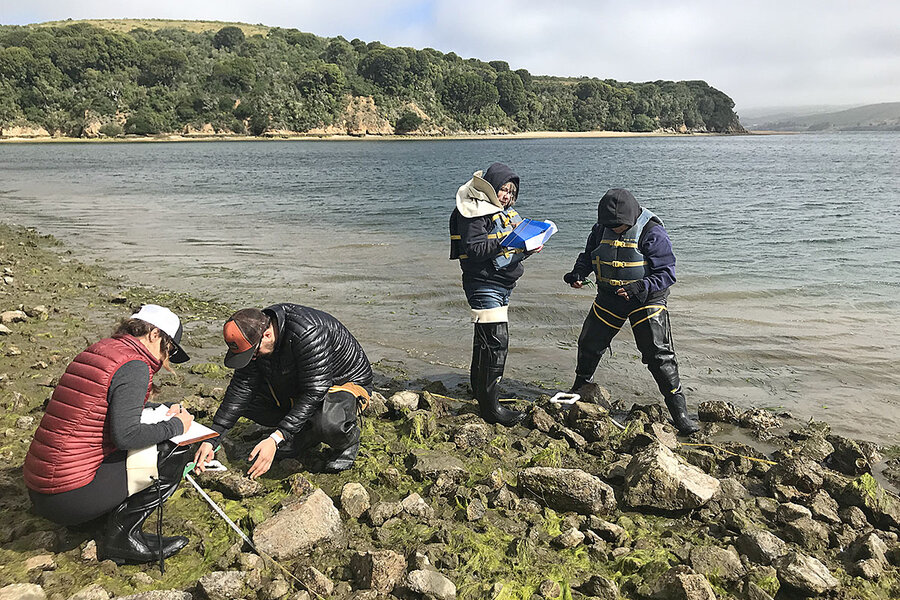It’s often hard to notice ecological changes, even when they threaten catastrophe. One oyster company in California hopes to change that.
By Amanda Paulson, Christian Science Monitor, June 25th 2019

When visitors to Hog Island Oyster Co. shuck Pacific oysters at picnic tables overlooking Tomales Bay, it’s the final stage in a story that founding partner Terry Sawyer likes to tell about the shellfish, the bay, and all the steps that went into bringing the briny delicacies to the plate just a few hundred meters from where they were harvested.
It’s a story that now also touches on the carbon cycle, climate change, and the ways in which the very chemistry of the ocean is shifting and how small businesses like Hog Island – along with the entire ocean ecosystem – are struggling to adapt.
The oyster farm helps make abstract issues like ocean acidification and climate change concrete, says Tessa Hill, a marine scientist at the University of California in Davis who studies acidification and has developed a partnership with Mr. Sawyer and Hog Island. “It feels incredibly tangible,” she says. “It’s about the food on our plate; it’s about family businesses; it’s about people’s livelihood along the coast. Ocean acidification and climate change will fundamentally change our relationship with the ocean.”
‘A giant sponge’
Ocean acidification is a direct result of increased carbon dioxide emissions. The oceans – “a giant sponge,” as Professor Hill likes to explain it – absorb about 30% of the carbon dioxide humanity emits. As those levels rise, the chemistry of the ocean fundamentally changes, measurably lowering the pH and making it more acidic. For sea life, one of the biggest risks is to creatures – like shellfish, corals, and sea urchins – that need carbonate ions to build their shells or other structures. The shifting chemistry of the ocean makes those key building blocks scarcer.
Read more about Hog Island’s work with UCSD on ocean acidification
